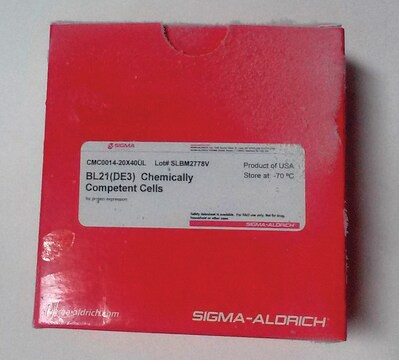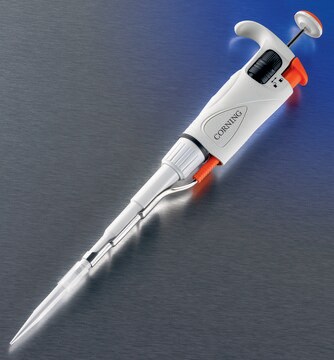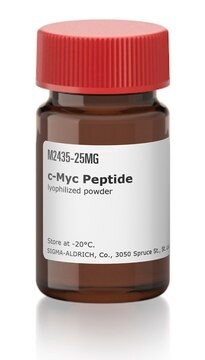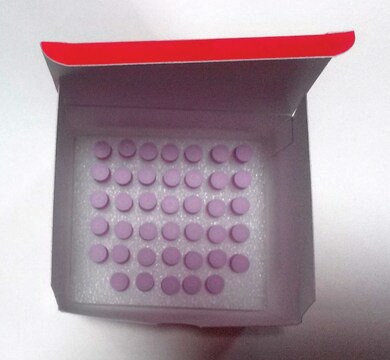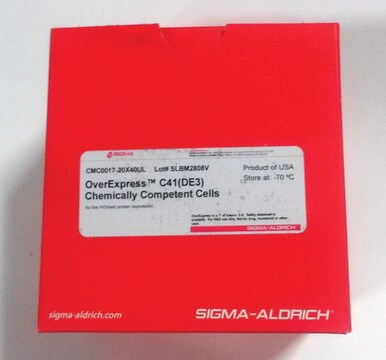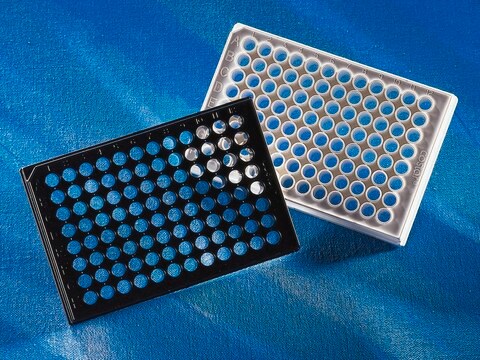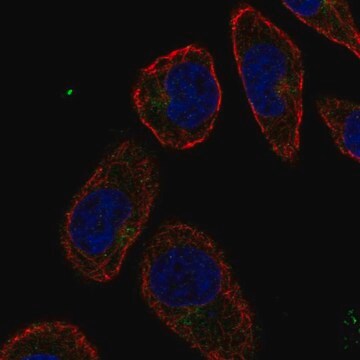CMC0021
OverExpress™ C41(DE3) Electrocompetent Cells
Escherichia coli, rod shaped
About This Item
Produits recommandés
Nom du produit
OverExpress™ C41(DE3) Electrocompetent Cells, for the highest protein expression
Source biologique
Escherichia coli
Qualité
for molecular biology
Mode de croissance
adherent or suspension
Morphologie
rod shaped
Technique(s)
microbiological culture: suitable
Transformation cellulaire
competent cell type: electrocompetent
transformation efficiency: ≥1 x 109 cfu/μg
Conditions d'expédition
dry ice
Température de stockage
−70°C
Description générale
Genotype
F – ompT hsdSB (rB- mB-) gal dcm (DE3)
Caractéristiques et avantages
- Express genes cloned into any T7 vector with these BL21(DE3) derivatives
- Effective in expressing toxic & membrane proteins
- Cited in over 350 research articles
Composants
- OverExpress C41(DE3) electrocompetent cells
- pUC 19 transformation control DNA
- recovery medium for expression
Informations légales
Produit(s) apparenté(s)
Code de la classe de stockage
10 - Combustible liquids
Faites votre choix parmi les versions les plus récentes :
Déjà en possession de ce produit ?
Retrouvez la documentation relative aux produits que vous avez récemment achetés dans la Bibliothèque de documents.
Protocoles
OverExpress™ Electrocompetent Cells are provided in 25 μL aliquots, sufficient for one transformation reaction.
Notre équipe de scientifiques dispose d'une expérience dans tous les secteurs de la recherche, notamment en sciences de la vie, science des matériaux, synthèse chimique, chromatographie, analyse et dans de nombreux autres domaines..
Contacter notre Service technique
